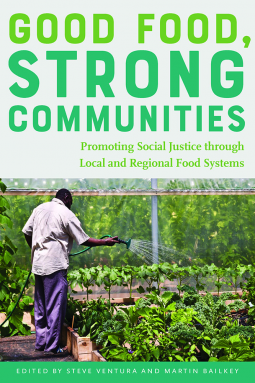
Good Food, Strong Communities
Promoting Social Justice through Local and Regional Food Systems
by Steve Ventura, Martin Bailkey
This title was previously available on NetGalley and is now archived.
Send NetGalley books directly to your Kindle or Kindle app
1
To read on a Kindle or Kindle app, please add kindle@netgalley.com as an approved email address to receive files in your Amazon account. Click here for step-by-step instructions.
2
Also find your Kindle email address within your Amazon account, and enter it here.
Pub Date Dec 01 2017 | Archive Date Dec 01 2017
University of Iowa Press | University Of Iowa Press
Description
The approach begins by laying out the basic principles of food security and food justice in light of the diversity of food system practices and innovations in America’s cities. The contributing authors address land access for urban agriculture, debates over city farming, new possibilities in food processing, and the marketing of healthy food. They put these basic elements—land, production, processing, and marketing—in the context of municipal policy, education, and food justice and sovereignty, particularly for people of color. While the path of a food product from its producer to its consumer may seem straightforward on the surface, the apparent simplicity hides the complex logistical—and value-laden—factors that create and maintain a food system. This book helps readers understand how a food system functions and how individual and community initiatives can lessen the problems associated with an industrialized food system.
Advance Praise
“This engaging edited volume tells us ‘what works’ in different cities to simultaneously bring about vibrant farms and gardens, just and fair food systems, strong communities, thriving local economies, sustainable ecosystems, and healthy people. It incorporates welcome reflection on dismantling racism through community-based work in large urban food systems.”—Molly D. Anderson, Middlebury College
“Because this compilation grounds an overview of practical and ethical issues in U.S. community food systems with important and original case stories, it makes a unique and useful contribution to the field.”—Christine Porter, project director, Food Dignity, University of Wyoming
Available Editions
| EDITION | Paperback |
| ISBN | 9781609385439 |
| PRICE | $45.00 (USD) |
| PAGES | 304 |








